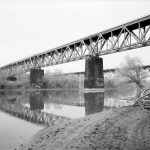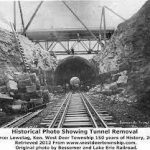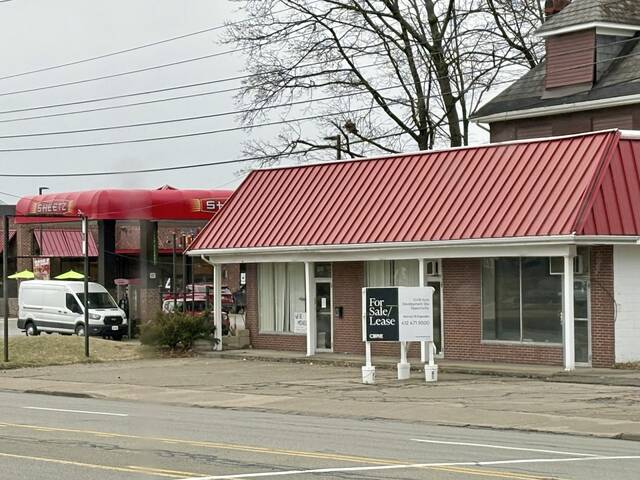One of the key routes in the nation’s era of industrial prosperity cut through the Alle-Kiski Valley.
The Bessemer & Lake Erie Railroad, founded by Andrew Carnegie in 1897, carried iron ore and coal from Conneaut, Ohio, to East Pittsburgh. It fed Carnegie’s Mon Valley steel mills with raw materials.
Iron ore mined in northern Minnesota at the Mesabi Range and other open-pit mines in that region was shipped via the Great Lakes to Conneaut harbor.
The rail line sliced through the Valley area, with the most recognizable portion of the railroad being the high-level bridge across the Allegheny River, connecting Harmar with Plum.
The bridge was built in 1918, an engineering marvel for its time. It runs parallel to the Pennsylvania Turnpike bridge, built in 1951.
Before that, a low level viaduct-type bridge served the railroad. The new bridge, however, attracted the attention of possible saboteurs, anxious to disrupt industrial production during World War I.
On June 17, 1917, two Austrian nationals were arrested on the bridge while it was under construction. Sgt. J.J. Mastrovich of the 18th Infantry ordered them to halt, and they were arrested when they were unable to explain what they were doing on the bridge and where they were going.
Engineering feats are part of the B&LE’s legacy.
When Carnegie bought an existing rail line that extended to Butler, he financed a rail extension to the North Bessemer section of Penn Hills. It became necessary to build a 400-foot tunnel located at West Deer’s Culmerville crossroads.
When larger locomotives were introduced in 1912, it became a problem because the tunnel was too small. The tunnel also encountered drainage problems. Instead of just enlarging the tunnel, engineers used a process called “daylighting,” cutting open the hill on both sides of the railroad.
A steel truss bridge was then built in 1921 to connect Saxonburg Boulevard and Little Deer Creek Road. The bridge was replaced in 2016.
Locally, several spurs served the railroad in the heyday of area coal mining. The short line Cheswick & Harmar Railroad had a 2.3-mile spur connecting the Harwick Allegheny Coal Company mine to the railroad at what then known as the Red Raven Station of Harmar. It was opened in 1903. Part of the rail bed can be seen by motorists traveling northbound on the Route 28 Expressway near the Syria Shrine headquarters.
Another connecting spur from the Indianola Inland Collieries Company mine in Indiana Township was built in 1919. A pier can be seen in Deer Creek from the Pennsylvania Turnpike near Route 28.
Coal mined in the Russellton section of West Deer also was utilized by the railroad. After the cars of iron ore were emptied near the steel plants, locally mined coal was taken in the empty rail cars to Conneaut.
After the collapse of the region’s steel industry in the early 1980s, rail traffic lessened. In 1988, the Bessemer & Lake Erie line was bought by Transtar, Inc.
In 2001, Transtar sold the railroad to Great Lakes Transportation, LLC. On May 10, 2004, Canadian National Railway acquired the railroad, which still carries freight such as iron ore and coal.











